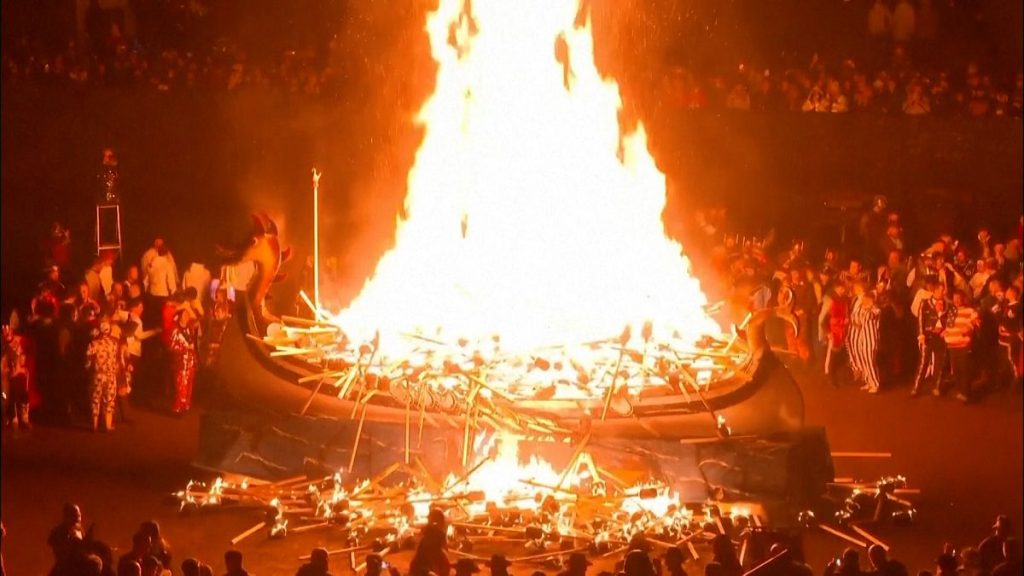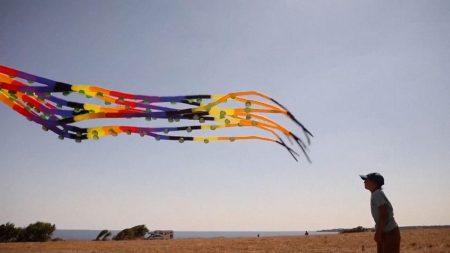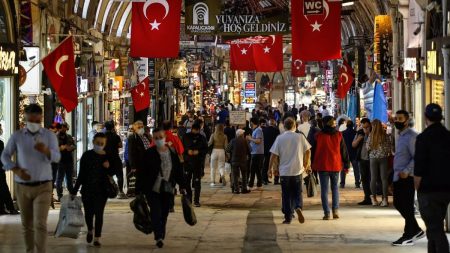The Up Helly Aa fire festival, a vibrant spectacle of Shetland’s Norse heritage, ignites the town of Lerwick every January, drawing thousands of participants and spectators alike. This unique celebration, deeply rooted in the islands’ Viking past, marks the culmination of the Yule season and provides a dramatic, fiery farewell to the winter darkness. Over a thousand “guizers,” as the participants are known, clad in elaborate handcrafted Viking costumes and wielding replica axes, swords, and torches, march through the streets of Lerwick, their procession culminating in the dramatic burning of a replica Viking longship. This fiery climax, set against the backdrop of the Shetland night, is a powerful symbol of renewal and a testament to the enduring spirit of the islands’ cultural identity.
The origins of Up Helly Aa can be traced back to the 1880s, though its exact genesis is shrouded in a blend of historical record and local lore. Initially, the festival involved boisterous celebrations with bonfires and barrels of tar being dragged through the streets, echoing ancient midwinter traditions. Over time, these practices evolved, incorporating elements of Shetland’s Norse heritage, eventually leading to the creation of the iconic Viking procession and the burning of a galley, solidifying the festival’s current form. This transformation reflects a conscious effort to connect with and celebrate the islands’ rich Viking past, shaping Up Helly Aa into the unique cultural event it is today.
The intricate preparations for Up Helly Aa are a year-round endeavor, spearheaded by dedicated volunteers from within the Lerwick community. Each year, a new “Guizer Jarl,” the chief guizer, is chosen to lead the festivities, embodying the spirit of the Viking leader. The Jarl’s squad, a select group of fellow guizers, designs and meticulously crafts their Viking costumes, showcasing remarkable artistry and craftsmanship. The construction of the galley, a painstaking process involving traditional boat-building techniques, is another central element of the preparations, ensuring a spectacular centerpiece for the fiery finale. This community-driven approach underscores the deep-seated importance of Up Helly Aa within Shetland’s cultural fabric.
The Up Helly Aa procession itself is a mesmerizing spectacle, a vibrant tapestry of light and sound against the backdrop of the Shetland night. The guizers, their torches illuminating the darkness, march through the streets of Lerwick, their rhythmic steps and the clang of their replica weapons echoing through the town. The procession culminates at the designated burning site, where the majestic galley awaits its fiery fate. As the torches are thrown onto the ship, the flames quickly engulf the structure, casting dancing shadows against the surrounding buildings and the faces of the assembled crowd, a truly unforgettable spectacle.
The burning of the galley is not simply an act of destruction, but a symbolic act imbued with deeper meaning. It represents the shedding of the old year and the welcoming of the new, a purification ritual echoing ancient fire festivals from across the Northern Hemisphere. The flames, consuming the galley, also symbolize the passing of the Viking age and serve as a powerful reminder of Shetland’s Norse heritage. This symbolic act, passed down through generations, continues to resonate with the people of Shetland, strengthening their connection to their past.
The Up Helly Aa fire festival stands as a testament to the enduring power of tradition and the strength of community spirit. It is more than just a festival; it is a living embodiment of Shetland’s unique cultural identity, a vibrant celebration of its Viking past, and a testament to the dedication and hard work of the volunteers who bring it to life each year. The fiery spectacle of the burning galley, against the backdrop of the Shetland night, is a powerful and evocative image, capturing the essence of this remarkable cultural event and its enduring significance for the people of Shetland. The cancellation of the festival during major global events, such as World Wars and the COVID-19 pandemic, further underscores its importance within the community, highlighting its central role in their annual calendar and its profound cultural impact. This temporary absence serves to emphasize the festival’s enduring significance and the collective anticipation of its return, reinforcing its status as a cornerstone of Shetland’s cultural identity.














